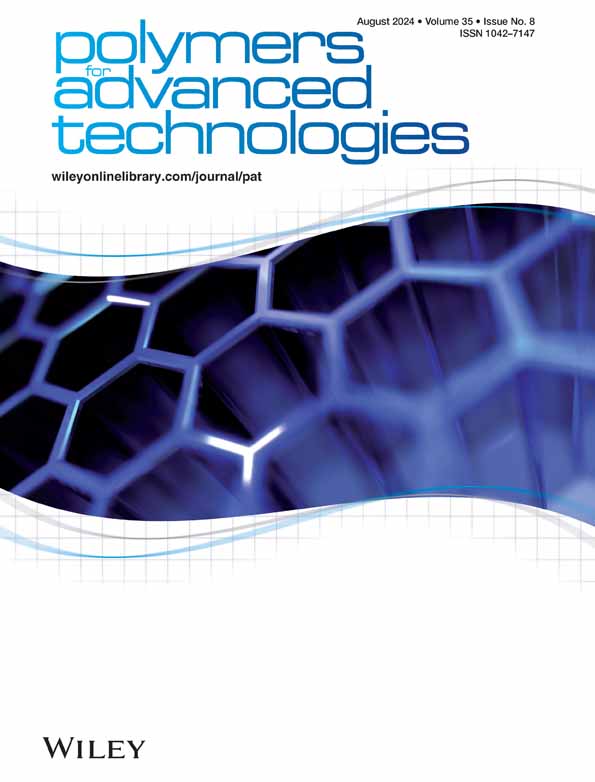海藻多糖的可持续生物塑料:综述
IF 3.4
4区 工程技术
Q2 POLYMER SCIENCE
引用次数: 0
摘要
历史上,亚洲曾广泛使用大型藻类作为食物。然而,目前人们对大型藻类再次产生了兴趣,因为除了在生物燃料生产中的用途外,大型藻类还被认为是一种潜在的碳捕获剂和蓝碳供体。生物塑料是多种聚合物的总称,这些聚合物可以是生物基的,也可以是可生物降解的,或者两者兼而有之。生物塑料工业利用了巨藻多糖及其固有的成膜能力,以巨藻多糖为基础的生物膜因其兼容性和易于生产而被广泛用于食品包装。以大型藻类为基础的生物塑料的商业化生产正在进行中,研究致力于开发适用于食品包装和生物医药领域的可生物降解/可堆肥生物膜。本综述旨在概述可用于形成生物膜和生物塑料的大型藻类多糖。文章讨论了生物膜形成的不同方法,并总结了增塑剂的影响、成膜方法和生物降解性。海洋大型藻类多糖的主要来源是琼脂、海藻酸、卡拉胶、层胶蛋白、褐藻糖胶和乌尔凡。褐藻(Padina pavica、Asophyllum nodosum、Laminaria japonica、Rugulopteryx okamurae、Sargassum natans、Sargassum siliquosum、Jolyna laminarioides、Gracilaria salicornia)、绿藻(Ulva fasciata、Halimeda opuntia、Codium fragile、Ulva intestinalis、Ulva lactuca、Ulva rigida)和红藻(Eucheuma cottonii、Porphyra sp.,Kappaphycus alvarezii、Gracilaria corticata)。综述结果表明,大型藻类多糖衍生生物塑料在实现可持续环境方面具有广阔的前景。本文章由计算机程序翻译,如有差异,请以英文原文为准。
Sustainable bioplastics from seaweed polysaccharides: A comprehensive review
The use of macroalgae for food has been extensive in Asia historically. However, there has been a renewed interest at present in macroalgae due to its recognition as a potential carbon capture agent and a blue carbon donor besides their utility in biofuel production. Bioplastics is an umbrella term for a wide variety of polymers that can be either biobased or biodegradable, or both. Macroalgal polysaccharides and their inherent film‐forming capacity are exploited in the bioplastics industry and macroalgal polysaccharide‐based biofilms are extensively used in food packaging due to their compatibility and ease of production. Commercial macroalgae‐based bioplastics production is ongoing, with research dedicated to the development of biodegradable/compostable biofilms suitable for the food packing and biomedicine sector. This review aims to provide an overview of the polysaccharides of macroalgae that can be used to form biofilms and bioplastics. Different methods for biofilm formation are discussed along with summarizing the effect of plasticizers, the method of film formation, and biodegradability. The major source of marine macroalgal polysaccharaides are agar, alginate, carrageenan, laminarin, fucoidan, and ulvan. Different groups of macroalgae are utilized for the production of polysaccharide derived bioplatics, namely, brown algae (Padina pavonica, Ascophyllum nodosum, Laminaria japonica, Rugulopteryx okamurae, Sargassum natans, Sargassum siliquosum, Jolyna laminarioides, Gracilaria salicornia ), green algae (Ulva fasciata, Halimeda opuntia, Codium fragile, Ulva intestinalis, Ulva lactuca, Ulva rigida ), and red algae (Eucheuma cottonii, Porphyra sp., Kappaphycus alvarezii, Gracilaria corticata ). The outcome of the review reveals that there is a vast scope for macroalgal polysaccharide‐derived bioplastics for a sustainable environment.
求助全文
通过发布文献求助,成功后即可免费获取论文全文。
去求助
来源期刊

Polymers for Advanced Technologies
工程技术-高分子科学
CiteScore
6.20
自引率
5.90%
发文量
337
审稿时长
2.1 months
期刊介绍:
Polymers for Advanced Technologies is published in response to recent significant changes in the patterns of materials research and development. Worldwide attention has been focused on the critical importance of materials in the creation of new devices and systems. It is now recognized that materials are often the limiting factor in bringing a new technical concept to fruition and that polymers are often the materials of choice in these demanding applications. A significant portion of the polymer research ongoing in the world is directly or indirectly related to the solution of complex, interdisciplinary problems whose successful resolution is necessary for achievement of broad system objectives.
Polymers for Advanced Technologies is focused to the interest of scientists and engineers from academia and industry who are participating in these new areas of polymer research and development. It is the intent of this journal to impact the polymer related advanced technologies to meet the challenge of the twenty-first century.
Polymers for Advanced Technologies aims at encouraging innovation, invention, imagination and creativity by providing a broad interdisciplinary platform for the presentation of new research and development concepts, theories and results which reflect the changing image and pace of modern polymer science and technology.
Polymers for Advanced Technologies aims at becoming the central organ of the new multi-disciplinary polymer oriented materials science of the highest scientific standards. It will publish original research papers on finished studies; communications limited to five typewritten pages plus three illustrations, containing experimental details; review articles of up to 40 pages; letters to the editor and book reviews. Review articles will normally be published by invitation. The Editor-in-Chief welcomes suggestions for reviews.
 求助内容:
求助内容: 应助结果提醒方式:
应助结果提醒方式:


